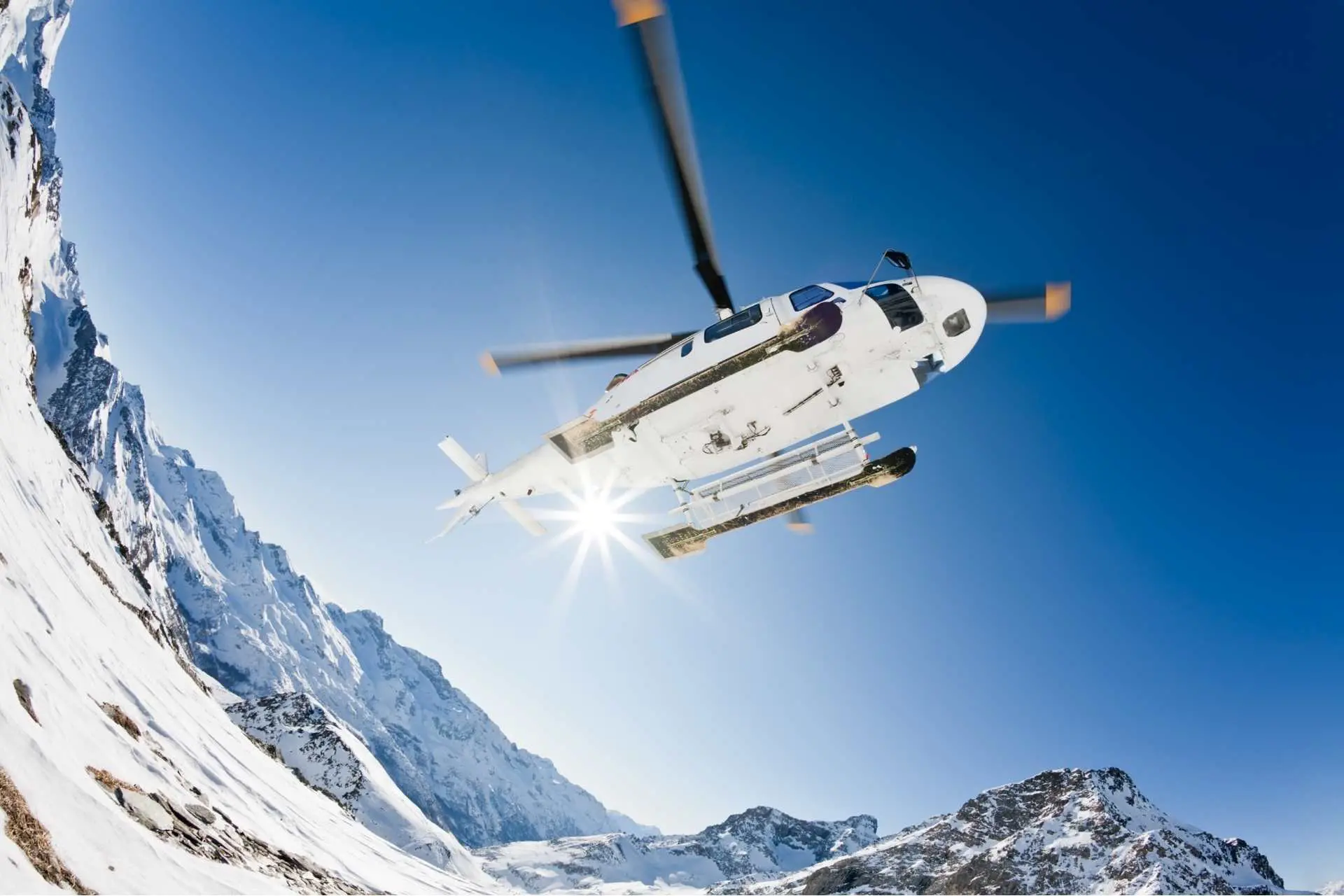
Heliskiing am Arlberg verlängert bis 2027
Die Vorarlberger Landesregierung hat die luftfahrtrechtliche Bewilligung für das Heliskiing in Lech am Arlberg bis 2027 verlängert.

So that one can Deep snow skiing to enjoy it properly is the right Skiing technique Basic requirement. Even many good piste skiers find it difficult when they ski in deep snow for the first time. Why is that? For one thing, the deep snow increases the turning resistance. So it is initially more difficult for the skier to make a turn in deep snow. As a reaction to this, many skiers tend to want to force a turn by turning their upper body. Unfortunately, this does not work. The second phenomenon that can be observed in deep snow is strong backwardness. In contrast to the hard slope, shorter and narrower piste skis in particular tend to sink into the soft snow with the shovel. To avoid this, many skiers lean back and thus adopt a reclined position. This position not only makes it harder to make nice turns in deep snow, it is also extremely tiring for the thigh muscles.
So how do you avoid these mistakes and ski the right powder technique?
Rhythmic, enjoyable skiing in deep powder snow - that's the goal at the Deep snow skiing off. The skier swings around a central position on the ski (middle position). In the relief phase before the turn change, the skis are brought to the snow surface for a short time to reduce the turning resistance in deep snow.
One thing is important to know: There is no completely different skiing technique in deep snow. The basics - initiating the turn, turning, steering, basic Alpine position - remain the same. However, a few adjustments need to be made to adapt to the changed snow conditions in deep snow.
At Deep snow skiing so it's all about the all-important lift. On the one hand, wider powder skis help. On the other hand, the so-called cushion that you have to build up under the skis. A tighter ski guide helps with this. And the feeling of compressing the snow under your skis so that you can push off. The following exercises help you to learn the skiing technique:
"There is no completely separate technique for deep snow skiing. The basics remain the same, but you have to adapt to the changed ground in deep snow."
With modern, wider skis, deep snow skiing is easier to learn and more fun. The rocker construction, i.e. a slightly bent-up shovel, makes the skis float even more easily and is also easier to turn. The following are suitable for deep snow skiing Preferably an all-round model with a width of 100 - 105 mm. With such a ski you have the widest range of use and are also prepared for changeable snow conditions. In the best case, you mount a freeride binding with walk function on these skis. This also gives you the option of tackling shorter ascents from the ski area to reach casual descents. A mega-fat big mountain ski is nice-to-have, but will rarely be used properly in winter. It simply requires a lot of snow and also space, which the topography of most areas in the Alps simply only offers to a limited extent.
Deep snow skiing usually takes place in the open ski area away from the secured pistes. Therefore, special attention must be paid to alpine dangers - especially Avalanches - to lay. Anyone who is off the secured slopes must know what they are doing. Every deep snow skier must carry the full emergency equipment, i.e. avalanche transceiver, shovel, probe, first aid kit. An airbag backpack is also not a mistake. The right equipment is one point, how to use the equipment correctly is another. This needs to be practised regularly and must sit blindly in an emergency. The best thing, of course, is not to get into dicey situations in the first place. In order to be able to correctly assess alpine dangers and avalanches, a more in-depth Training in snow and avalanche awareness and risk management is necessary. It is not a mistake to join a state-certified ski guide for deep snow skiing.
> DEEP SNOW SKIING WITH SKI GUIDE <
> PRACTICE DAY AVALANCHE & SAFETY <

Die Vorarlberger Landesregierung hat die luftfahrtrechtliche Bewilligung für das Heliskiing in Lech am Arlberg bis 2027 verlängert.

Testbericht: Salomon Shift Alpha Boa 130 – Der präzise Freerider für ambitionierte Skifahrer

Gudauri has become an insider tip for freeriders in recent years. Read now why a freeride trip to Georgia is worthwhile!

Comfortable, congestion-free and climate-friendly journey with the ÖBB Nightjet. Now in an attractive combination ticket incl. ski pass.

Ski touring in Norway is something special. 5 reasons why it should definitely be on your to-do list.
2 Comments
Good article for skiing in deep snow. It's good to know that it's best to use a versatile ski model that has a width of 100 -105 mm at best. I'm researching this because I'd also like to go on a freeride tour.
Hello Andreas,
Thanks for your comment. I am a fan of versatile freeride skis with a moderate width. If you're not heliskiing in Canada, a model like this makes perfect sense in the Alps.